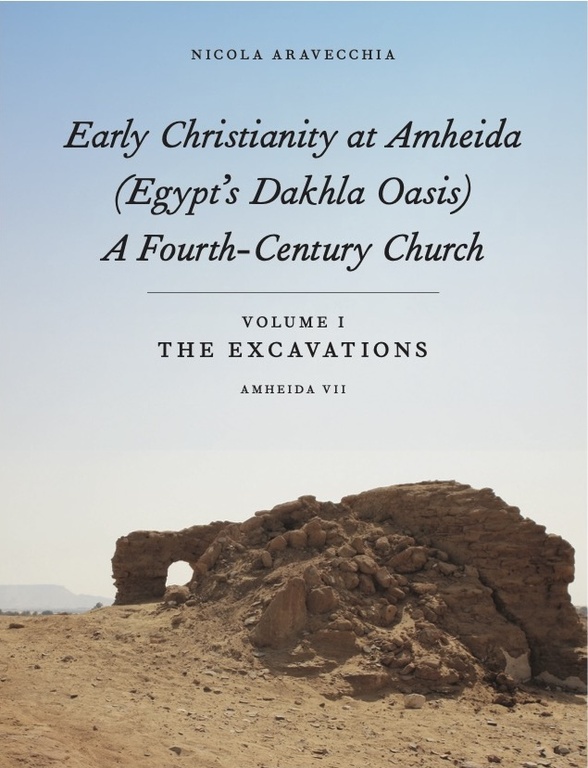Early Christianity at Amheida (Egypt’s Dakhla Oasis), A Fourth-Century Church: Volume 1, The Excavations (Amheida VII)

- by: Nicola Aravecchia
- Early Christianity at Amheida (Egypt’s Dakhla Oasis), A Fourth-Century Church Volume 1, The Excavations, September 10, 2024
- ISAW/NYU Press
- ISBN: 9781479813506
Early Christianity at Amheida (Egypt's Dakhla Oasis), A Fourth-Century Church: Volume 1, The Excavations is an archaeological, historical, and art historical study of a remarkable basilica-church excavated at Amheida in Dakhla Oasis. This church, excavated between 2012 and 2023, dates to the fourth century CE and is therefore among the earliest purpose-built churches in Egypt. It also contains one of the oldest, if not the oldest, excavated Christian funerary crypts in Egypt. The church at Amheida thus offers a wealth of new data on early Christianity in Egypt, particularly with respect to the earliest phases of Christian art and architecture and burial customs. Aravecchia presents a systematic treatment of the stratigraphy, building techniques, materials, features, architecture, decoration, and finds of the church, carefully contextualized in the history of early Christianity in the late antique Great Oasis and Egypt more broadly.
Nicola Aravecchia is Associate Professor of Classics and of Art History and Archaeology at Washington University in St. Louis and Archaeological Field Director of the NYU Amheida Excavations. In addition to numerous articles about archaeology and early Christian architecture, he is also the author of ʿAin el-Gedida: 2006–2008 Excavations of a Late Antique Site in Egypt's Western Desert (Amheida IV) and the co-author of An Oasis City, both published by ISAW and the NYU Press.
About ISAW Monographs
ISAW Monographs publishes authoritative studies of new evidence and research into the texts, archaeology, art history, material culture, and history of the cultures and periods representing the core areas of study at NYU's Institute for the Study of the Ancient World. The topics and approaches of the volumes in this series reflect the intellectual mission of ISAW as a center for advanced scholarly research and graduate education whose aim is to encourage the study of the economic, religious, political, and cultural connections between ancient civilizations, from the Western Mediterranean across the Near East and Central Asia, to China.